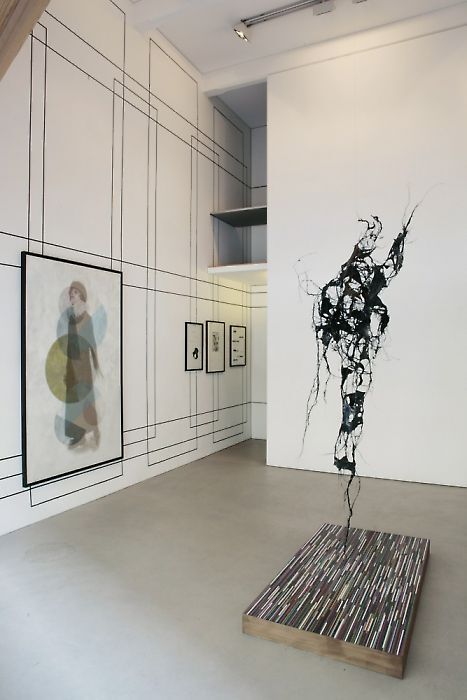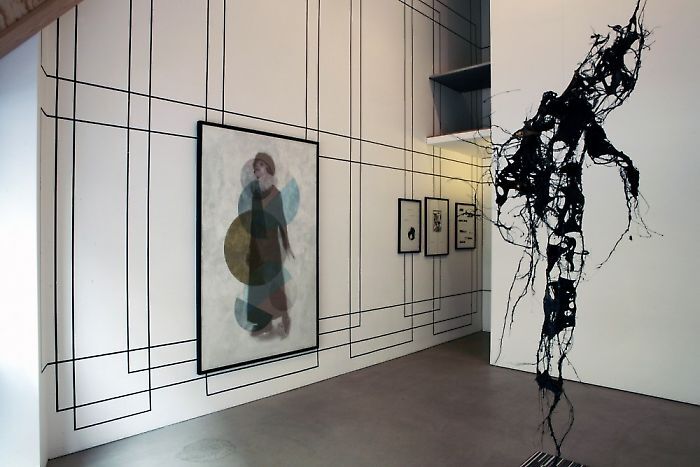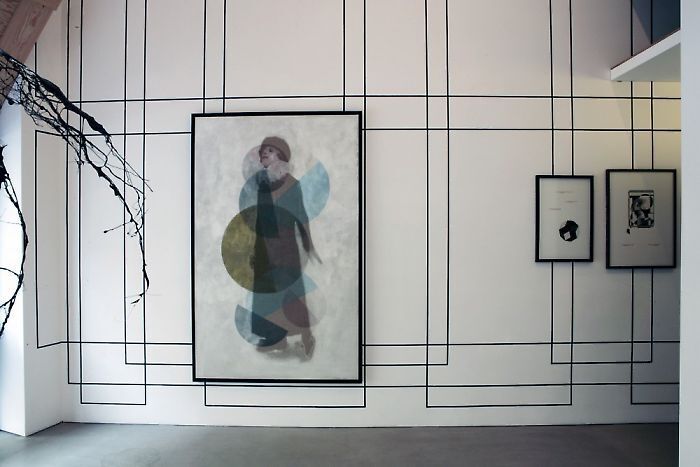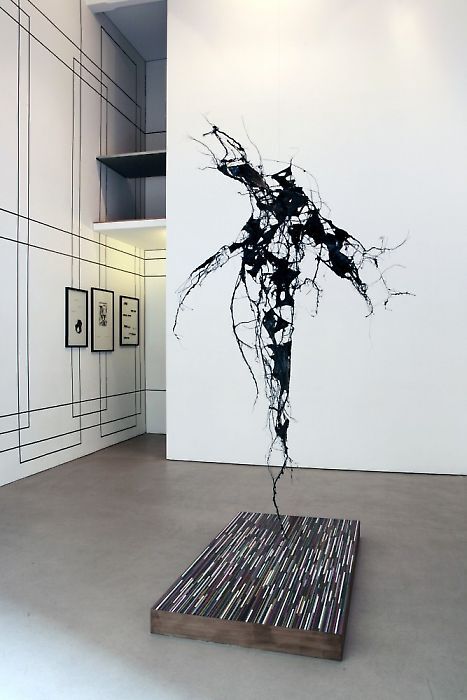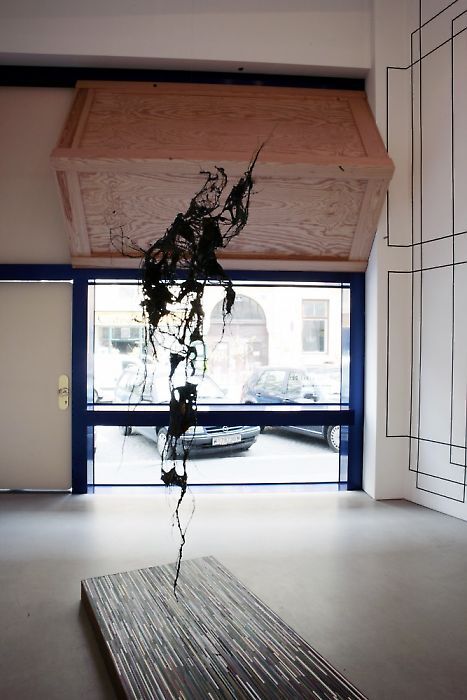—
Matthias Bitzer
Les visages de la Mademoiselle Demimonde
The combination of the invisible and the real is a theme of symbolism. In a new look at classical modernism, Matthias Bitzer combines portraits and geometric constructions in drawings, paintings, and sculptures; seemingly befallen by a melancholic reverie, these works actually illustrate the transition of object and space as painting and furthermore serve as an interface between the decoration of the constructive, an ornamental aspect, and a broken stringency vis-à-vis the formal aspect of the material. The artist himself once referred to a "decoded reality."
In these new works on Les visages de la Mademoiselle Demimonde a transcendence in the application of paint leads to a subjective veiling of the abstractly concrete. The works in this exhibition, intended as a series (and perhaps as a trilogy), refer to Emmy Ball-Hennings (1885-1948), actress, poet, prostitute, muse, model, and co-founder of Dadaism. This interplay secures a reconsideration of modernity in the present view on the future as an incomplete process. The mixing of fiction and reality as impressively expressed in Ball Henning's often autobiographical writings, interwoven with inventions and additions, is given a visual equivalent. All the same, the multiple identity, the multiplicity of her person is more a psychological matter that is removed from time, by no means serving to present a biography. Bitzer often refers in his works to historical persons who find themselves in an outsider position; he grants them an iconic presence, keeping the psychology of these protagonists ambivalent on the surface and allowing something magical-mystical to become manifest between things. The splittings, cuts, curvatures, layerings, and threadbare quality, as in a sculpture made of shellac, emphasize this in exchange with the decorporealized angel or ghost like presence of Emmy Ball-Hennings. A sometimes imperfect execution and use of raw canvas is latently evident as a human dimension and a corrective to a conceptual approach.
For Matthias Bitzer, this reversal of the principles of modernism – the decay of old forms in the sense of iconoclasm – revolves around the existential question of the construction of identity. What constitutes an identity? What happens when a person lives the biography of someone else, when one uses various masks? Les visages de la Mademoiselle Demimonde, the wife of Hugo Balls, attest in this exhibition to the fascination with abstract and figurative representation in art, society, and nature. By removing and recombining components, the cultural organization of space and time is dissolved.
The origin of the geometric formal language lies in the radical currents of Italian futurism, in particular Giacomo Balla. The role of the woman in futurism before the backdrop of emotionality is a recurring theme in Bitzer's work. "What is the essence of the image?," Emmy seems to be asking. In the flowers of the rare cactus that only blooms once in its life as a "queen of the night," we recognize death, not its own, but that of art, that with Adorno hopes in this way to survive. Needless to say, this cactus does not exist. The indefinite indeed, but this usually looks usually quite different, less fictive and less beautiful, in the words of Matthias Bitzer – in a geometric realm: I used her skin as my skin to walk through the fire!
Inquiry
Please leave your message below.
